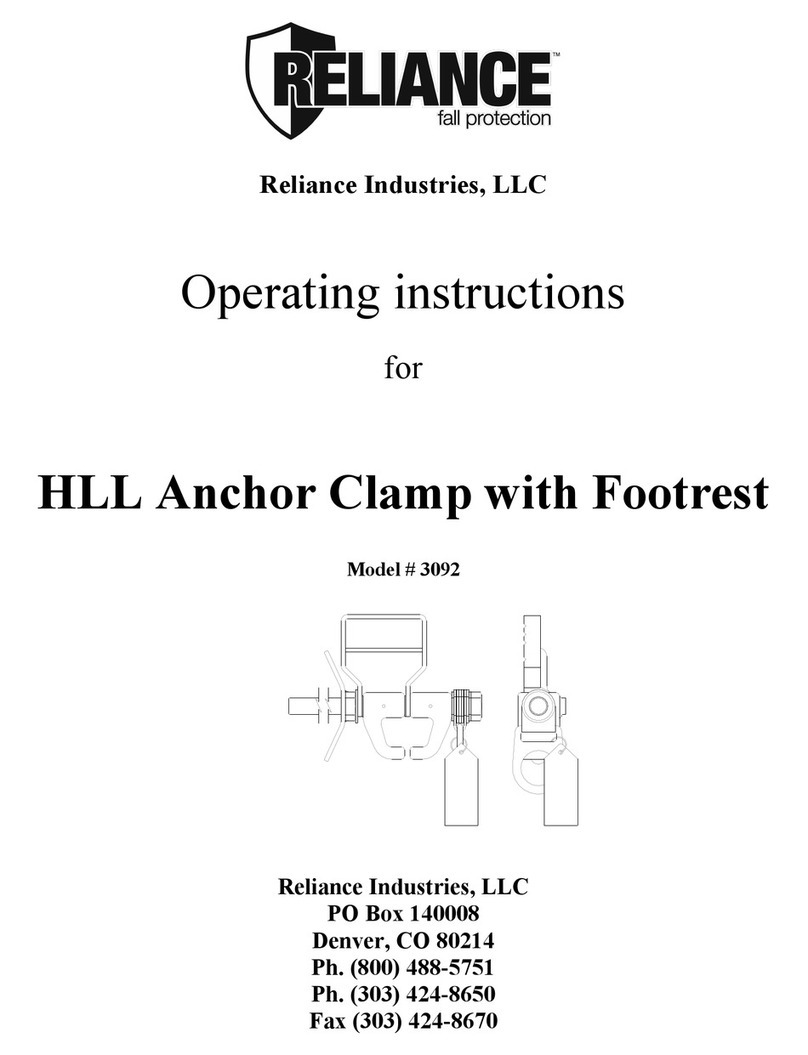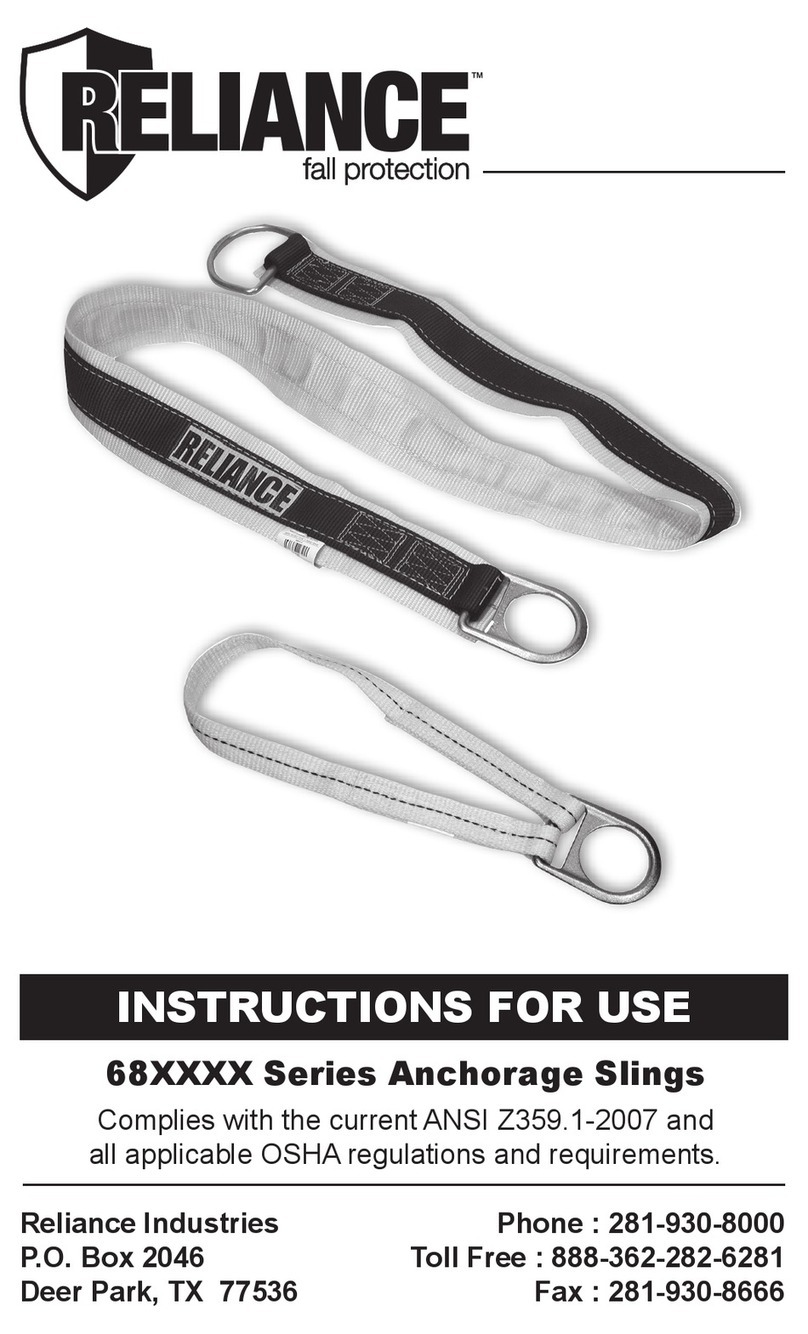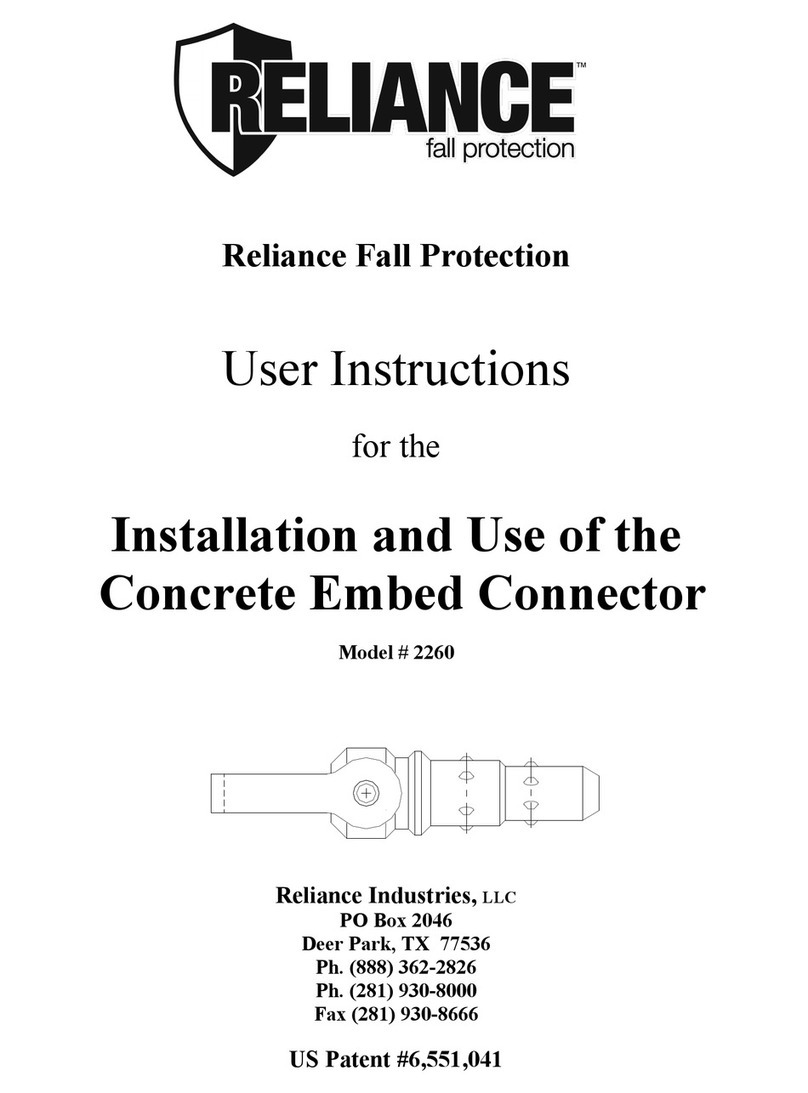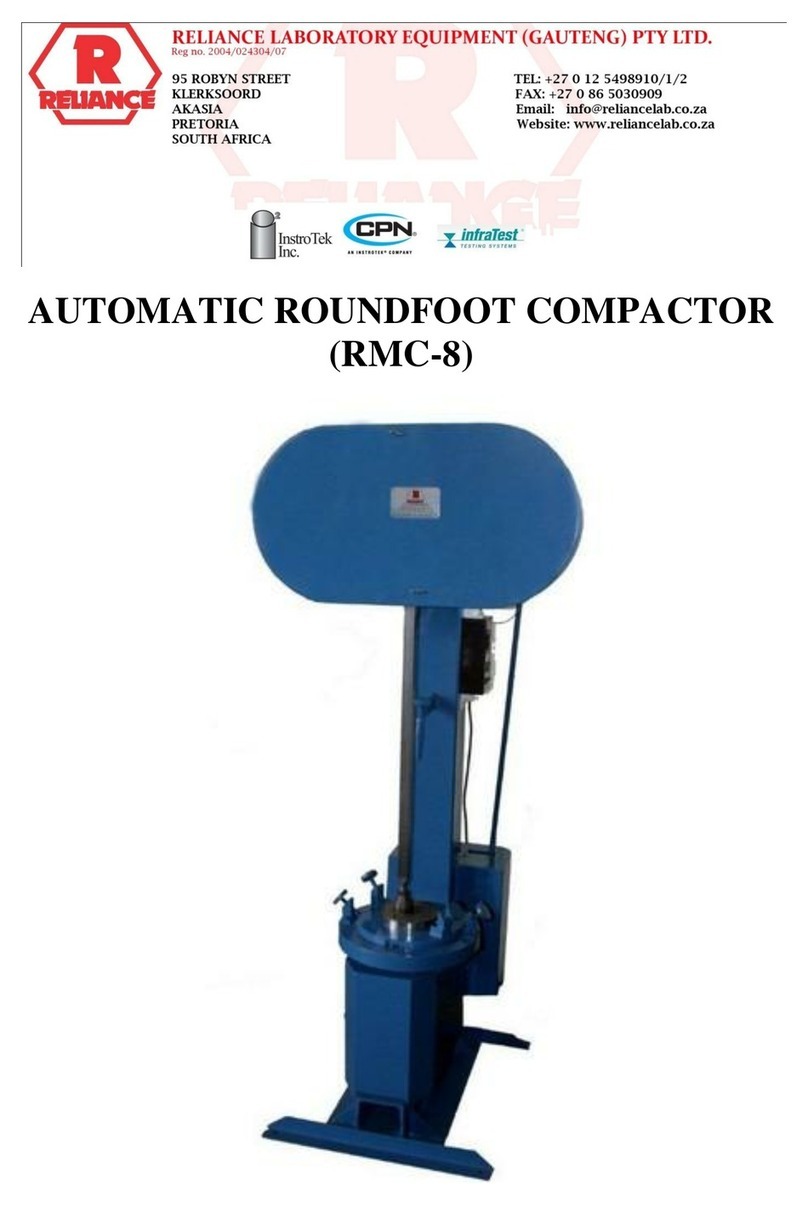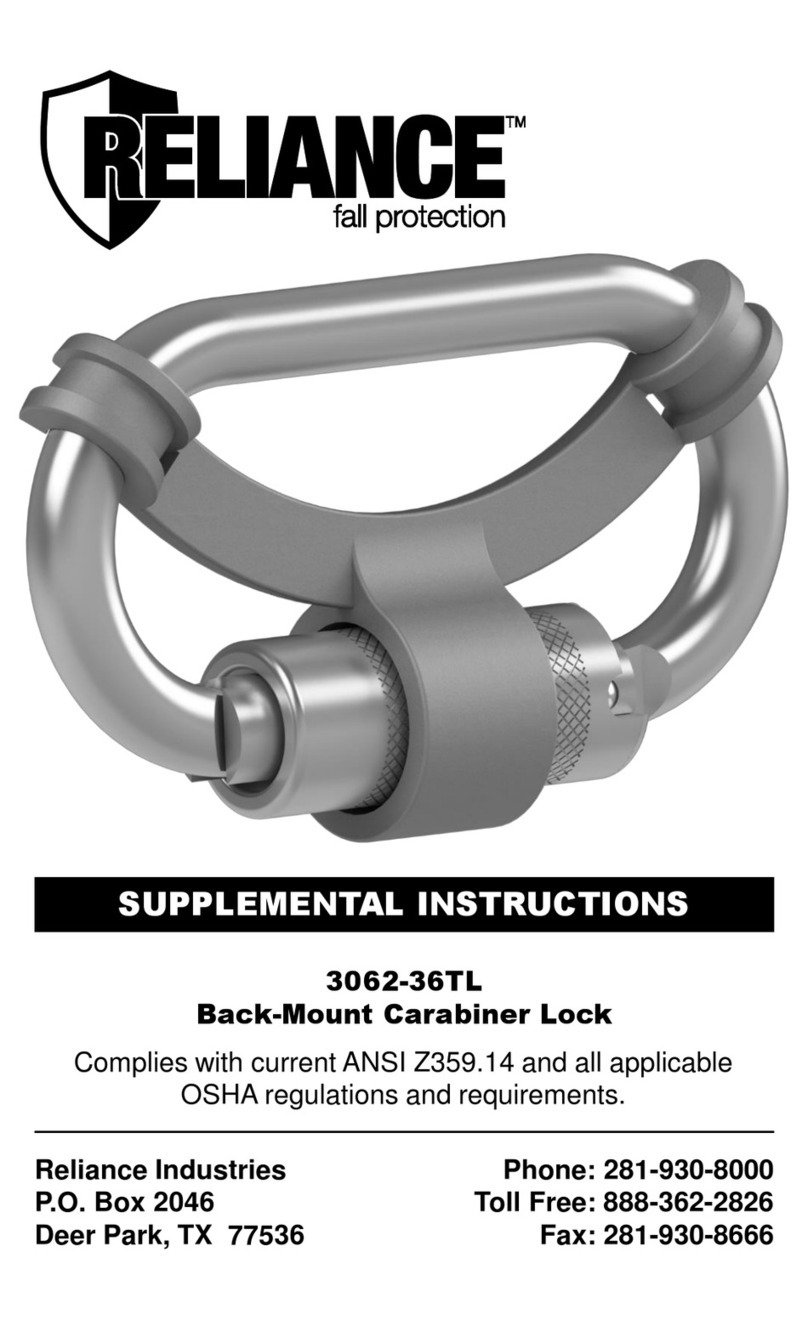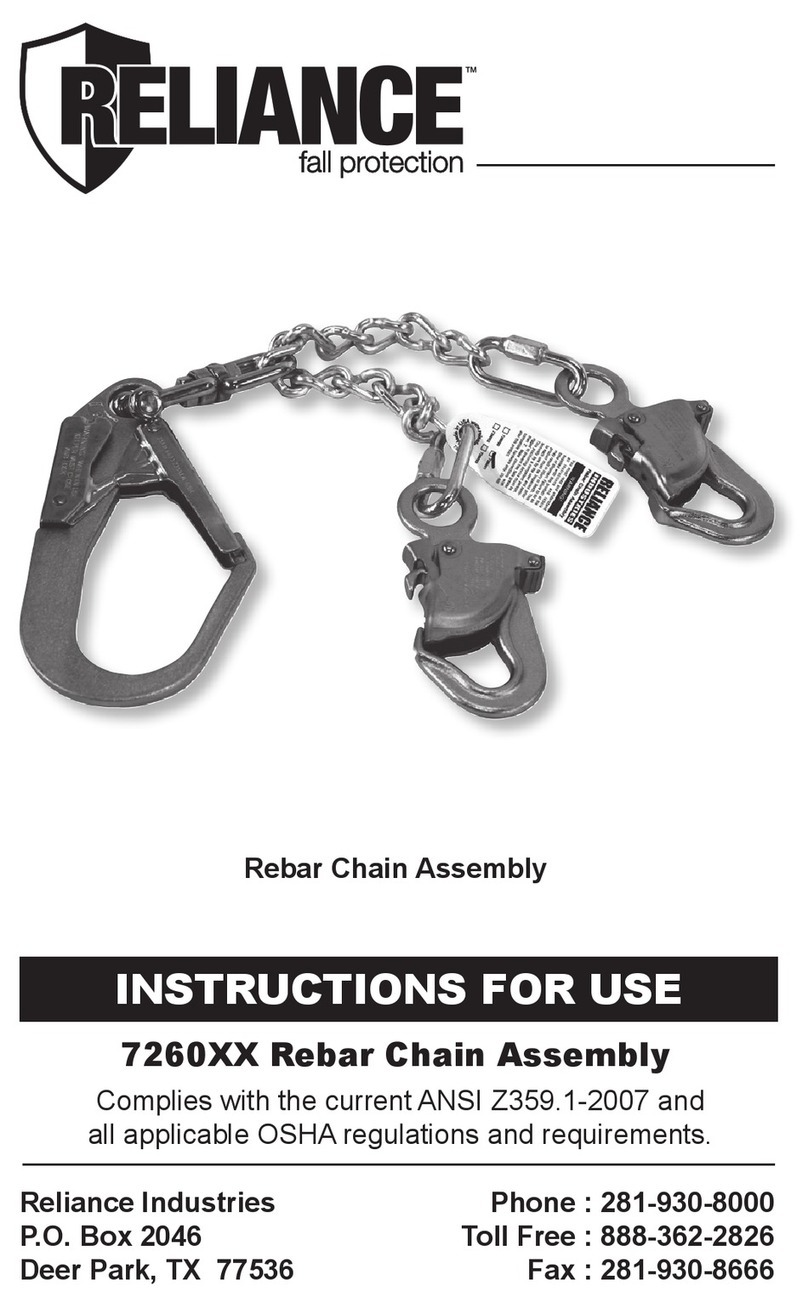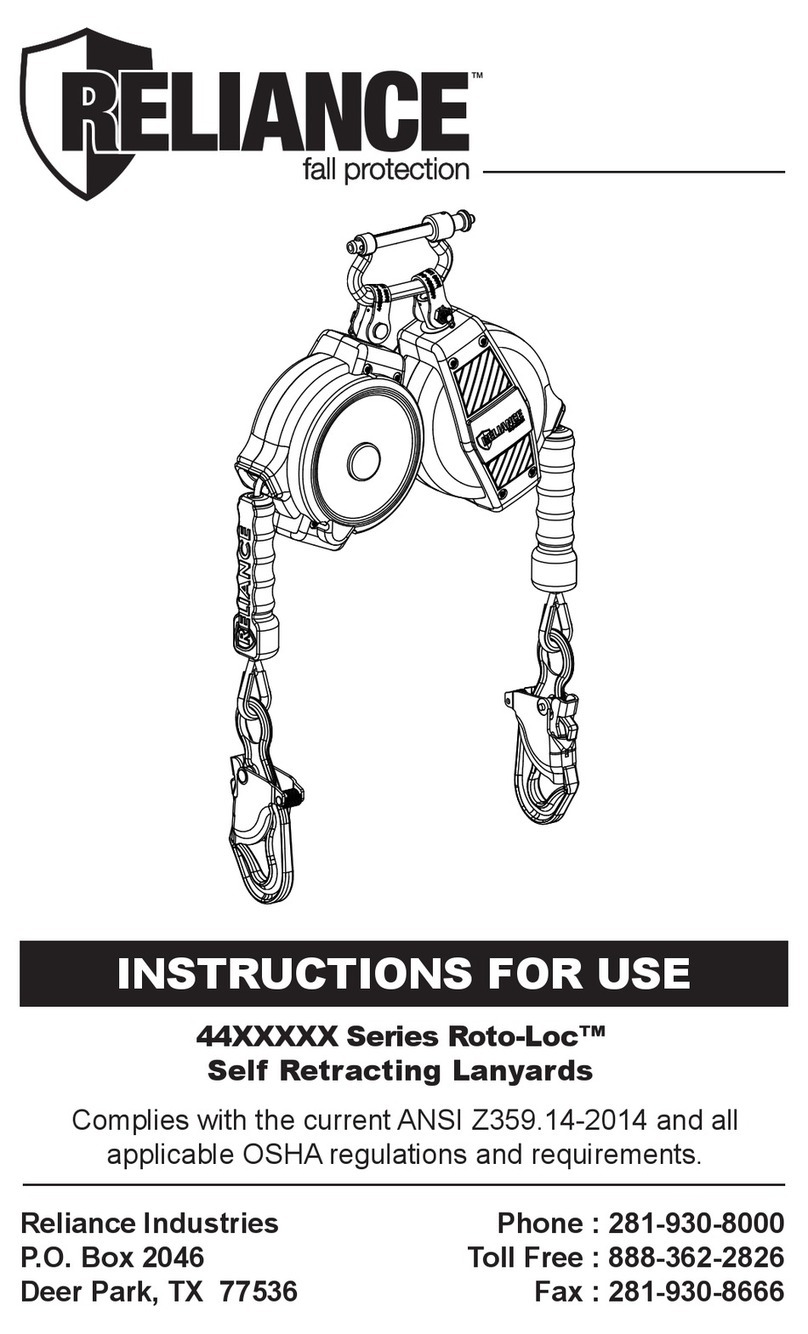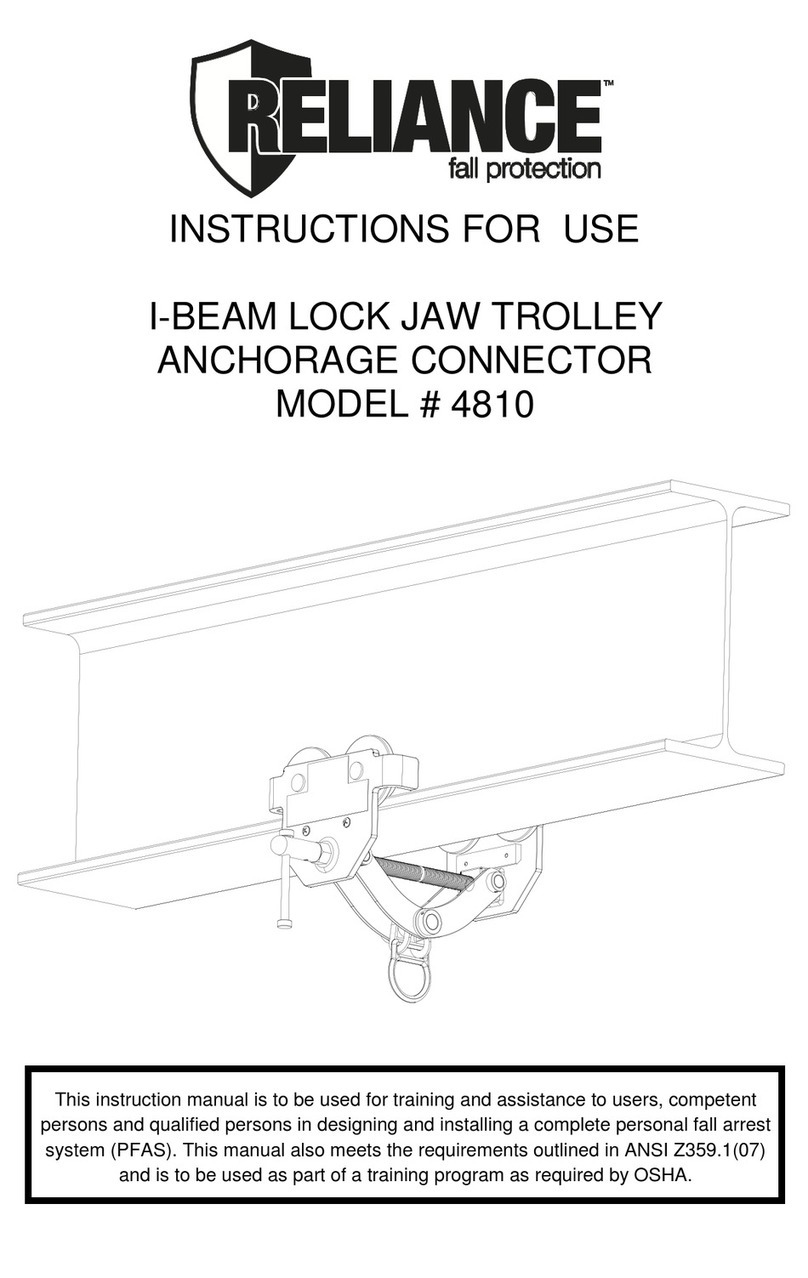
Instructions for Use
Page 3
User Instructions
Reliance Self Retracting Lifelines
User Instruction Manual - Self Retracting Lifelines
This manual is intended to meet the Manufacturer’s Instructions as required by
the current ANSI Z359.1(2007) ,and should used as part of an employee training
program as required by OSHA.
WARNING: This product is one part of a personal fall arrest, restraint, work posi-
tioning, personnel riding, climbing, or rescue system. Without the other necessary
components in such sub-systems the self retracting lifeline itself serves no useful
purpose. The user must follow the manufacturer’s instructions for each compo-
nent of the system. These instructions must be provided to the user before using
this product and retained for ready reference by the user. The user must read,
understand (or have explained), and heed all instructions, labels, markings and
warnings supplied with this product and with those products intended for use in
association with it before using this equipment. Manufacturer’s instructions must
be followed for proper use and maintenance of this equipment. National stan-
dards and state, provincial and federal laws require the user to be trained before
using this product. This manual can be used as part of a such a user safety-
training program that is appropriate for the user’s occupation.
IMPORTANT: Alterations or misuse of this product or failure to follow in-
structions may result in serious injury or death. If you have questions on the
use, care, or suitability of this equipment for your application, contact RELIANCE
Fall Protection for information.
DESCRIPTION
The Skyloc™Self Retracting Lifeline (SRL) is designed to be a component in a
personal fall arrest systems (PFAS). It may be used in most situations where
a combination of worker mobility and fall protection is required (i.e. inspection
work, general construction, maintenance work, oil production, conned space
work, etc.). The Skyloc™SRL is designed for use by a single person weighing up
to 400 lbs [181kg] (body weight plus tools) *PLEASE NOTE - capacity is specic
to lifeline model. See Page 6 for complete details. Skyloc™Self Retracting Lifeline
features a cam-action pawl system ensuring positive lock-up even in the most de-
manding environments. Available standard cable / web lengths allow the Skyloc™
to be mounted overhead in areas where there are no other convenient anchor
points for personal fall arrest means. The Pelican™snaphook’s unique hook body
design prevents the accidental “false engagement” to the harness dorsal D-ring,
while the case swivel or anchor connector (depending on model) provides an
easy to see load indicator showing whether the Skyloc™has been exposed to a
fall arrest load and needs to be serviced.
